#mughal
Text
Emerald Spectacles from India, c. 1620-1660 CE: the lenses of these spectacles were cut from a single 300-carat emerald, and it was believed that they possessed mystical properties

These eyeglasses are also known by the name "Astaneh-e ferdaws," meaning "Gate of Paradise," based on the perception of the color green as a symbol for spiritual salvation/Paradise. This was a common belief in Mughal-era India, where the spectacles were made.
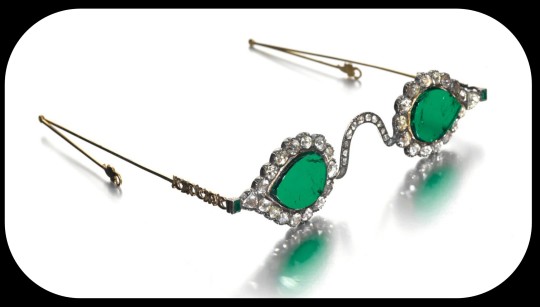
The lenses were crafted from two thin slices of the same emerald. Together, the lenses have a combined weight of about 27 carats, but given the precision, size, and shape of each lens, experts believe that the original emerald likely weighed in excess of 300 carats (more than sixty grams) before it was cleaved down in order to produce the lenses. The emerald was sourced from a mine in Muzo, Colombia, and it was then transported across the Atlantic by Spanish or Portuguese merchants.
Each lens is encircled by a series of rose-cut diamonds, which run along an ornate frame made of gold and silver. The diamond-studded frame was added in the 1890s, when the original prince-nez design was fitted with more modern frames.
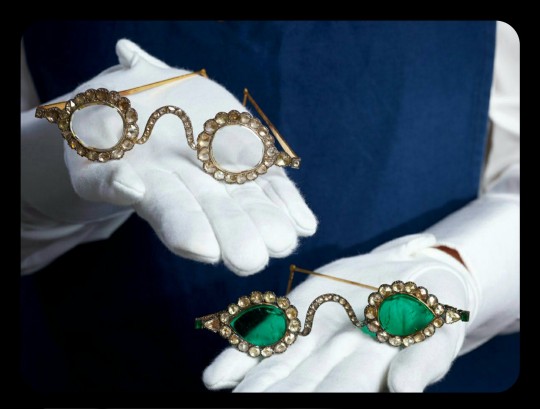
The emerald eyeglasses have long been paired with a second set of spectacles, and they were almost certainly commissioned by the same patron. This second pair is known as Halqeh-e nur, or the "Halo of Light."
The Halo of Light features lenses that were made from slices of diamond. The diamond lenses were cleaved from a single stone, just like the emerald lenses, with the diamond itself being sourced from a mine in Southern India. It's estimated that the original, uncut diamond would have weighed about 200-300 carats, which would make it one of the largest uncut diamonds ever found.

These lenses are so clear and so smoothly cut that it sometimes looks like they're not even there
Both sets of spectacles date back to the mid-1600s, and it's generally believed that they were commissioned by a Mughal emperor or prince. The identity of that person is still a bit of a mystery, but it has been widely speculated that the patron was Shah Jahan -- the Mughal ruler who famously commissioned the Taj Mahal after the death of his wife, Mumtaz Mahal. Shah Jahan did rule as the Mughal emperor from about 1628 to 1658.
The emerald and diamond lenses may have been chosen for symbolic/cultural reasons, or they may have been chosen simply because they're pretty and extravagant; their meaning/purpose is unclear. Experts do believe that the eyeglasses were designed to be worn by someone, though.
It was believed that the spectacles had spiritual properties, like the ability to promote healing, ward off evil, impart wisdom, and bring the wearer closer to enlightenment. Those beliefs are often related to Indic and Islamic traditions, some of which ascribe spiritual and/or symbolic traits to emeralds and diamonds. Emeralds can be viewed as an emblem of Paradise, divine salvation, healing, cleansing, and eternal life; diamonds are similarly associated with enlightenment, wisdom, celestial light, and mysticism.
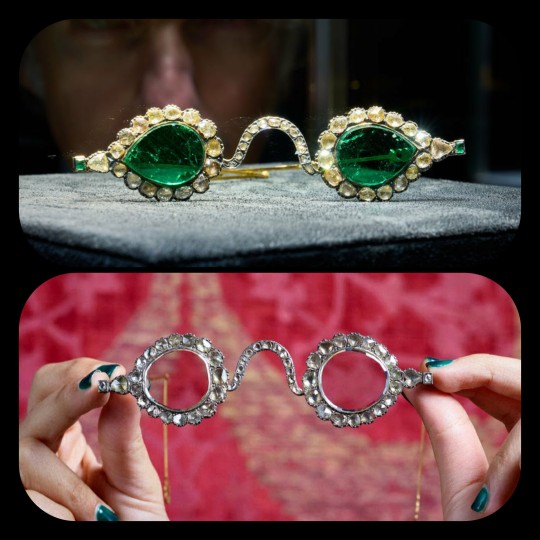
The Gate of Paradise and the Halo of Light were both kept in the collections of a wealthy Indian family until 1980, when they were sold to private collectors, before going on auction once again back in 2021. They were valued at about $2 million to $3.4 million per pair.
Sources & More Info:
Sotheby's: Mughal Spectacles
Architectural Digest of India: At Sotheby's auction, Mughal-era eyeglasses made of diamond and emerald create a stir
Only Natural Diamonds: Auspicious Sight & the Halqeh-e Nur Spectacles
The Royal Society Publishing: Cleaving the Halqeh-Ye Nur Diamonds
Gemological Institution of America: Two Antique Mughal Spectacles with Gemstone Lenses
Manuscript: From Satan's Crown to the Holy Grail: emeralds in myth, magic, and history
CNN: The $3.5 million Spectacles Said to Ward off Evil
BBC: Rare Mughal Era Spectacles to be Auctioned by Sotheby's
#history#archaeology#artifact#mughal#india#17th century#art#emerald#diamond#glasses#indian lore#islam#religion#mysticism#indian history#anthropology#spirituality#fashion
4K notes
·
View notes
Text

Mughal Gem-Set Rock Crystal Cup, India, Circa 18th Century
Source: Luxury Porcelain @ Facebook
#mughal#india#indian high jewelry#rock crystal#precious gems#work of art#18th century#high jewelry#luxury jewelry#fine jewelry#fine jewellery pieces#gemville
592 notes
·
View notes
Text

Dagger with Scabbard
Indian, Mughal 1605–27
The hilt of the dagger is constructed of heavy sections of gold over an iron core and its scabbard mounts are of solid gold. All the intricately engraved surfaces are set with gems and colored glass finely cut with floral forms. The designs closely parallel those in Mughal painting of the early seventeenth century, suggesting the dagger dates from the reign of Emperor Jahangir (1605–27), whose deep love of nature, especially flowers, is well documented in his memoirs, the "Tuzuk." The blade is forged of watered steel.
134 notes
·
View notes
Photo
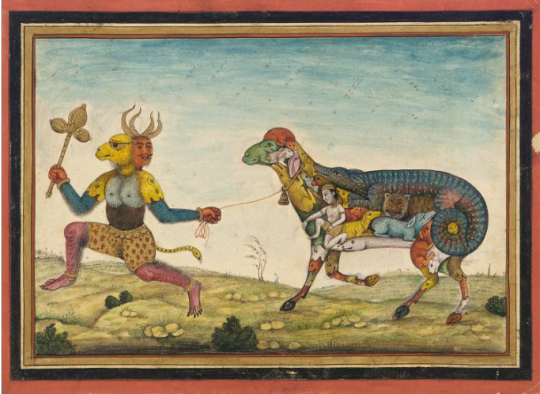
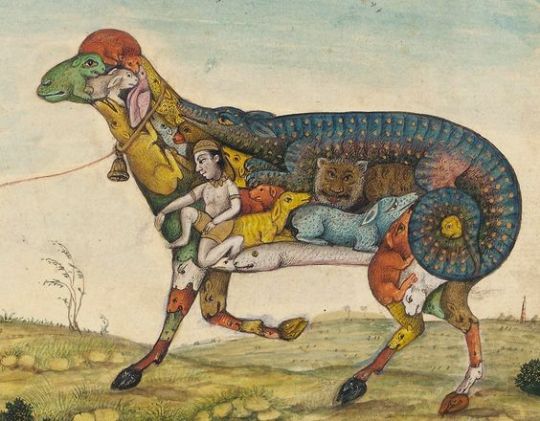
Unknown, A demon leading a composite sheep (with detail)
Mughal dynasty, 19th century
Mughal Court
Mughal School
India
Freer Gallery of Art
1K notes
·
View notes
Text
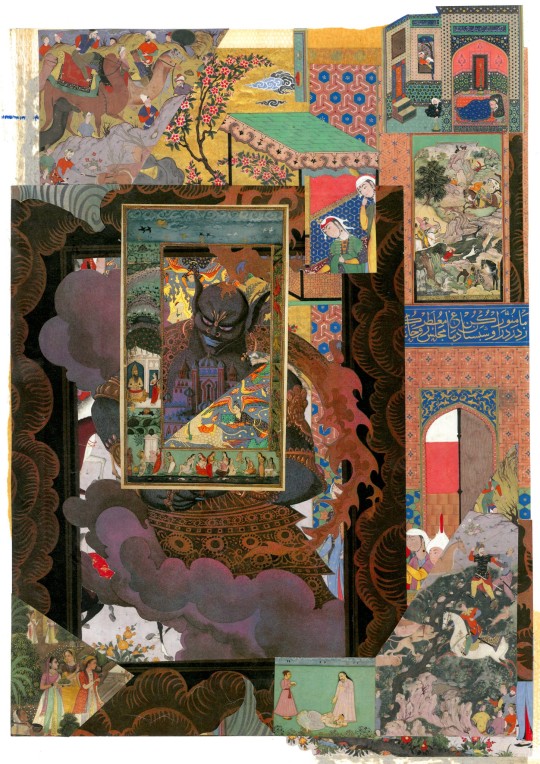
Composition (on wishes and war)
You can find prints of this and my other collages on inprnt here:
189 notes
·
View notes
Text

Brighton & Hove News, 28 July 2023:
'A Brighton family have literally stopped traffic with a new mural inspired by a sari pattern on their new home.
Poppy Jaman and Jaan Madan moved to Southampton Street in Hanover in January, and immediately knew they wanted to make a splash when decorating the outside.
She said: “One of the reasons we wanted to move to the centre of Brighton is that it’s so colourful.
“We were inspired by murals in Washington where there’s a whole area where there’s murals which have been created out of adversity.
“That inspired the idea of making a statement with our home. I wanted to not just paint something that I love. If you just love something that’s enough, but I also wanted to say here’s a bit of my identity.
“I collect saris and Jamdani is a signature saris of Bangladesh. It’s got a colonial past to it.

📷 X
The mural is inspired by the Jamdani weave saree, the signature saree of Dhaka, Bangladesh, which dates back at least as far back as 300BC.
Between the 16th and 19th centuries, Jamdani fabric – so fine it was known as ‘woven air’ – was one of the most highly coveted commodities in Mughal courts and further afield. However, by the mid-19th century, Jamdani had become almost extinct.
Poppy has written more about her relationship with the Jamdani design and its colonial history here.'
#sari#mural#brighton#mughal#textiles#textile history#jamdani#dhaka#bangladesh#colonial history#indian history#weave#woven fabric#pattern#surface pattern#surface pattern design#pattern design#textile design#surface decoration#street art#uk#england#british asian#saree#traditional crafts#traditional textiles#traditional clothing#bengali#weaving
124 notes
·
View notes
Photo


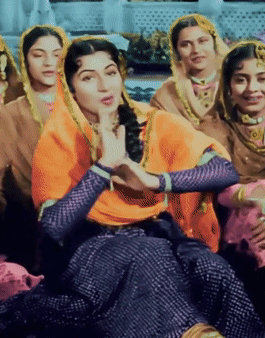



Mughal-e-Azam (1960) | Anarkali’s costumes
#mughal e azam#costumeedit#perioddramaedit#mughal-e-azam#madhubala#anarkali#perioddramagif#perioddramanet#bollywood#bollywoodedit#desiblr#desi tag#bollywoodgif#india#desi#costumes#mughal e azam 1960#mughal#history#hulderposts#faves
447 notes
·
View notes
Text
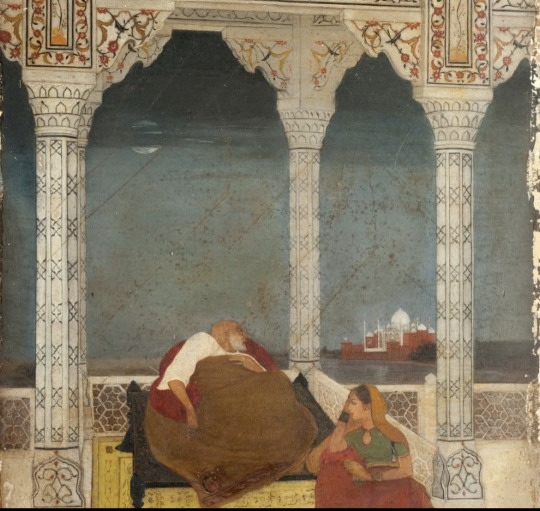
a painting of the passing of the mughal emporer, Shahjahan, looking at the taj, with his favourite daughter, Jahanara by his side
“bapa,” she whispers, clasping his wrists to feel his pulse. a damp wind rises over the yamuna river & flutters through her silk ghagra. the moon shines in its full glory, witnessing the reverence of this royal family. princess jahanara gently rocks her father whose cold skin remains still. titled the king of the world, Shahjahan, descends into the after world as a pauper. she wipes her tears, wailing and calling out to her brothers with whom he’ll unite soon.
“farewell, bapa,” she kisses his hands that smell like kashmiri apples. she rises from his side, her flushed cheeks smeared with dried salt. across the indigo river she can see the luminous tomb of her beloved mother, resting by the flowing river. she weeps, but relived that her father is out of his misery. nine years of agony & finally he can be with his begum, his aziz.
#desi tumblr#desiblr#desi tag#desi aesthetic#poetry#poets corner#indian dark academia#desi culture#desi poetry#desi stuff#desidarkacademia#desi moodboard#mughal#mughal empire#shahjahan#taj mahal#mumtaz#desi things#indian poetry#indian literature#indian history#indian painting#writers and poets#poetsandwriters#dark academic aesthetic#indian light academia#desi core
95 notes
·
View notes
Text
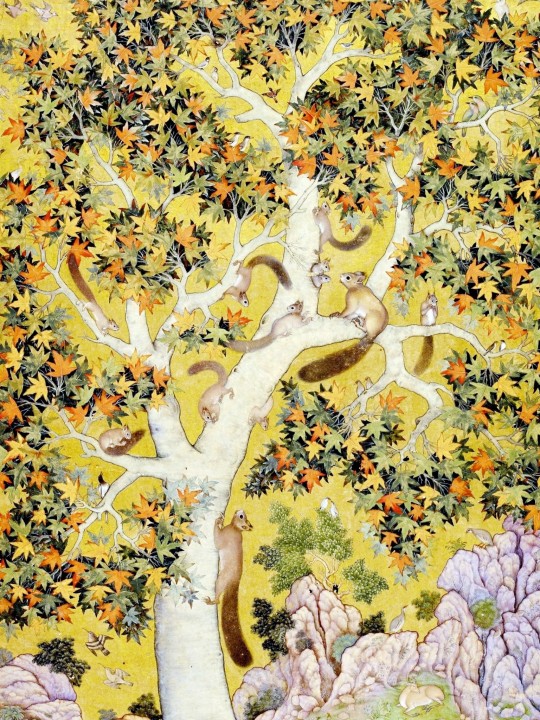
Abu'l Hasan (1589 - after 1630, before 1658), Squirrels in a Plane Tree (detail) ca. 1610, India.
1K notes
·
View notes
Text

Jusuf and Zuleykha by Muhammad Nadir Samarqandi, 1630s; Mughal Indian art
37 notes
·
View notes
Text

Shalimar gardens, Lahore Pakistan
#shalimar gardens#mughals#lahore#pakistan#mughal garden#babürlüler#mughal#mughal empire#mughal architecture
21 notes
·
View notes
Text

17th Century Emerald Cup Created With 252 Carats Of Emerald. Persian Verses Inscription. Belonged To Emperor Jehangir Of Mughal India
Source: Archaeology and Art via Facebook
#mughal india#mughal#emperor jehangir#indian jewellery#emerald#emerald cup#high jewelry#luxury jewelry#fine jewelry#fine jewellery pieces#gemville
486 notes
·
View notes
Photo
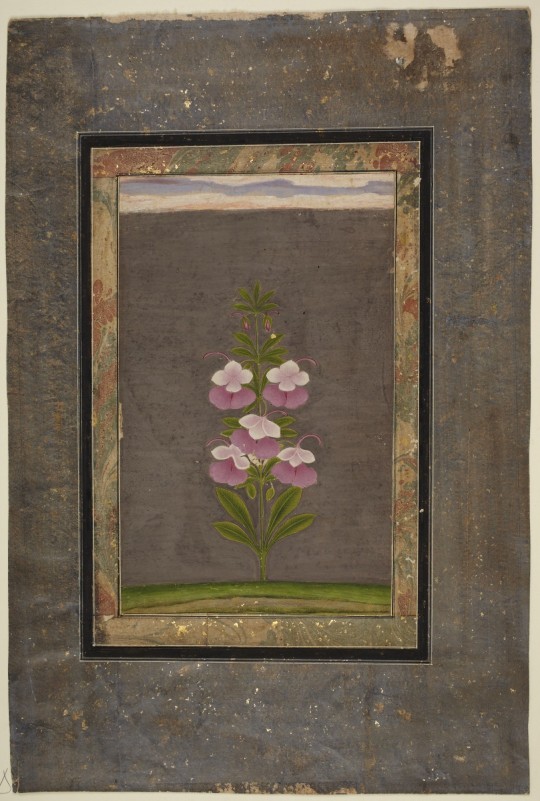
Pink Flower, late 17th century / Mughal. Opaque watercolor on paper.
91 notes
·
View notes
Photo

Unknown, Scene from a Fantastic Garden, Indian miniature, Mughal Period, early 1800's
312 notes
·
View notes
Text
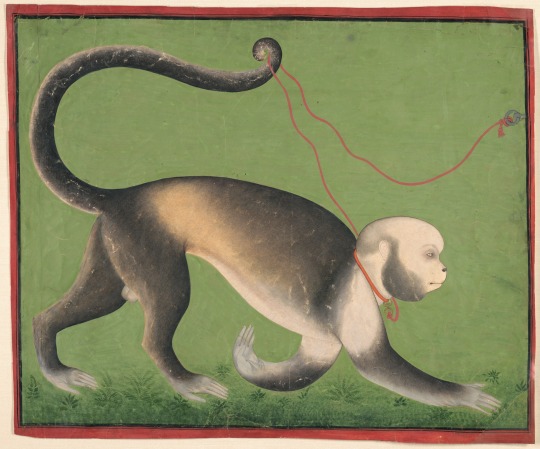
Unknown Artist from Rajasthan, A Monumental Portrait of a Monkey, ca. 1700-1715, watercolor/paper (Art Institute, Chicago)
An inscription on the back of the painting states the monkey's name was Husaini, and he was the pet of Daud Khan Panni, a nobleman at the Mughal court.
22 notes
·
View notes
Text
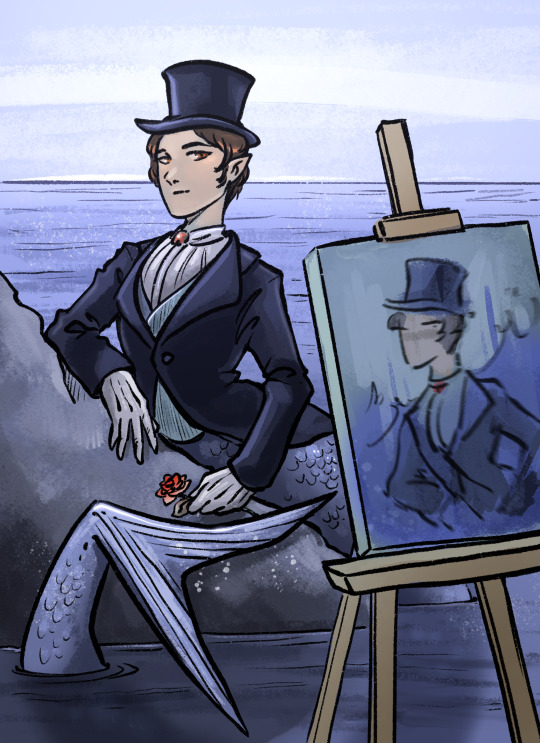




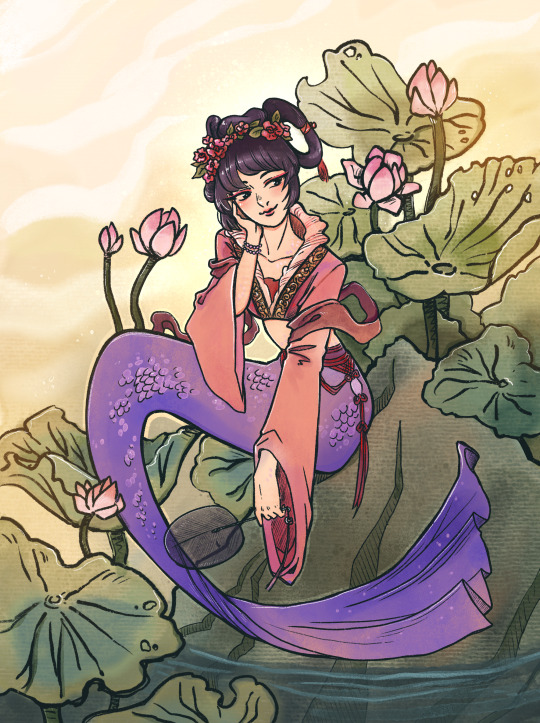



Artworks for the awesome historical mermay challenge! I didn't want to draw official themes and found a great alternative on instagram
#mermay 2023#mermay#mermaid#mermaid art#mermaid aesthetic#historical fantasy#medieval#renessaince art#edo era#ancient egypt#ancient greece#tang dynasty#mughal#late victorian era#fantasy art#fantasy#fantasy character#fantasy creature#artists on tumblr#illustration#digital art#digital arwork
34 notes
·
View notes